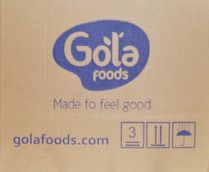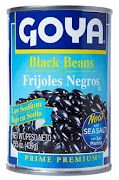The Board dismissed this Section 2(d) and 43(c) opposition to registration of the mark GOLA FOODS for "health food supplements" because opposer Goya Foods failed to submit its evidence on time. The Board, however, went on to decide Goya's likelihood of confusion and dilution claims on the merits, in case a reviewing court disagrees with the Board's finding that all of Goya's evidence was not timely submitted. Goya Foods, Inc. v. George Lage de Assis Rocha, Opposition No. 91247918 (July 19, 2021) [not precedential] (Opinion by Judge Albert Zervas).
Untimely evidence: The only evidence in the record consisted of the pleadings and the opposed application, automatically of record pursuant to Rule 2.122(b)(2). Applicant did not submit any evidence or testimony, while all of Opposer Goya's evidence was submitted late.
The Board had set October 5, 2020, as the closing date for Goya's testimony period. Goya did not submit any testimony. It filed its first notice of reliance on October 6th, which document included a certificate of service dated October 5th. The second and third notices of reliance were filed and served on October 7th.
Rule 2.121(a) states: "No testimony shall be taken or evidence presented except during the times assigned by the Board, unless by stipulation of the parties approved by the Board, or upon motion granted by the Board, or by order of the Board."
Goya missed the October 5th deadline for filing its proofs. The
Board concluded that, "[b]ecuase there is no admission by
Applicant nor proof to support Opposer's claims, Opposer's
claims must fail." It Board therefore dismissed Goya's
claims of likelihood of confusion and dilution.
Goya's Claims: Nonetheless, the Board proceeded to consider Goya's claims on the merits, as if Goya had introduced its evidence on time. Goya alleged likelihood of confusion with, and likely dilution of, its registered marks GOYA and GOLLA and its common law mark GOYA FOODS, for various food items, including black beans, hot peppers, coffee, and fruit drinks, and for retail and wholesale food services. However, Goya did not submit any evidence regarding it GOYA FOODS mark, and thus failed to prove priority, and so the Board gave that mark no consideration.
Rumbling through the DuPont factors, the Board found GOLA FOODS to be similar in sound, appearance, and commercial impression to the GOYA and GOLLA marks. However, as to the involved goods and services, the Board was not able to locate "a shred of evidence" supporting Goya's arguments that the involved goods are "complimentary" (sic) because they are often purchased together at a grocery store or supermarket and are taken together at meals. "Attorney argument is no substitute for evidence." The Board therefore considered this factor to be neutral. Likewise, there was no probative information in the record about the parties' respective trade channels, and so this factor was also deemed neutral.
As to the strength of opposer's marks, the Board found both
GOYA and GOLLA to be inherently distinctive and conceptually
strong; as to commercial strength, Goya alleged that its marks are
famous, but its evidence was limited, particularly after the Board
rejected much of the evidence as hearsay. The Board concluded that
opposer's marks are entitled to the "normal scope of
protection accorded to inherently distinctive marks," and this
factor slightly favored a finding of likelihood of confusion.
In sum, despite the similarity of the marks and the overlap in classes of consumers, opposer did not establish that the involved goods and services are related or that their marketing channels overlap or are related. The Board concluded that Goya failed to carry its burden to prove likelihood of confusion by a preponderance of the evidence, and so it dismissed the Section 2(d) claim.
As to Goya's dilution-by-blurring claim, Goya's evidence fell "far short" of proving that its marks are famous for dilution purposes. And so, the Board also dismissed the dilution claim.
The content of this article is intended to provide a general guide to the subject matter. Specialist advice should be sought about your specific circumstances.
We operate a free-to-view policy, asking only that you register in order to read all of our content. Please login or register to view the rest of this article.



